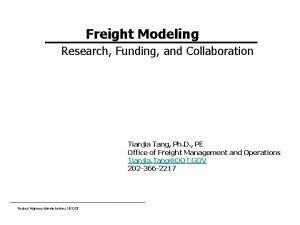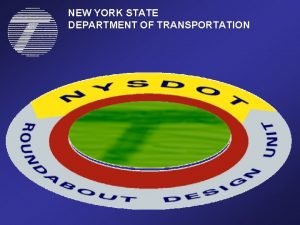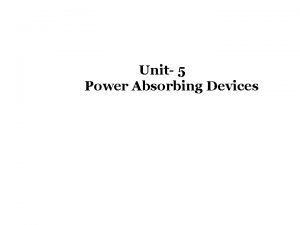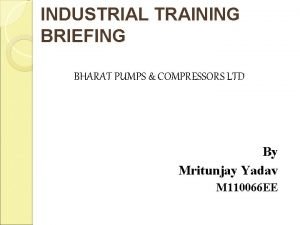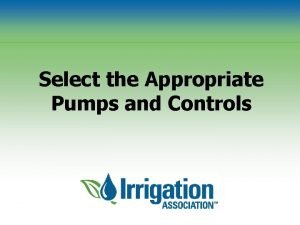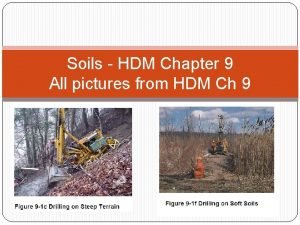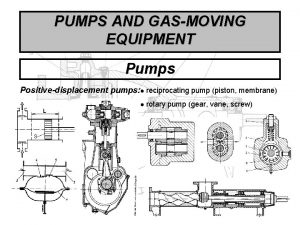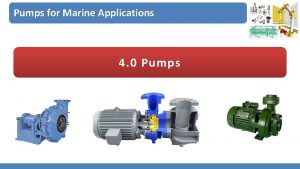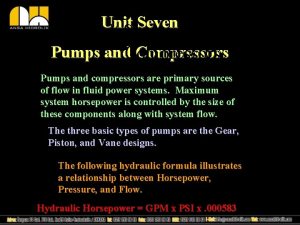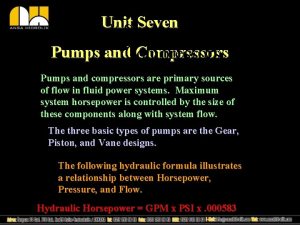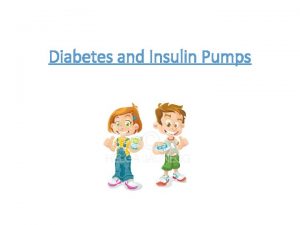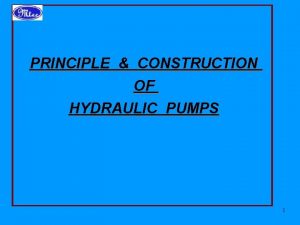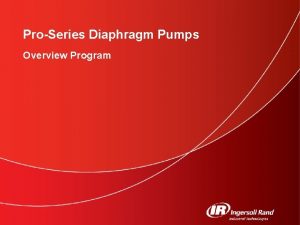Multiple Pumps Multiple Pumps The HDM and FHWA




















- Slides: 20

Multiple Pumps

Multiple Pumps • The HDM and FHWA recommend more than one pump • Redundancy • Flexibility • Ability to manage flows changing with time

Multiple Pumps • Hydraulic reasons for multiple pumps • Single pump may not produce enough added head – pumps in series add head • Single pump may not produce enough discharge – pumps in parallel add discharge

Multiple Pumps • Two different kinds of pumps • Pump A cannot meet the needs of the system at any flow rate while Pump B supplies enough head over part of the system curve.

Multiple Pumps • Pump B and A in series • Add head at given Q Added operational range

Multiple Pumps • Pump B and A in parallel (common discharge line) • Add Q at given head Added discharge range

Multiple Pumps • Utility of parallel and series depends on the system curve and the discharge needs. • The parallel example is not useful for the given system curves, but a pair of parallel-series (4 pumps) might be!

Multiple Pumps • Pump B and A in series, 2 pair in parallel • Full range for system Added operational range

Multiple Pumps • Multiple pumps are probably typical • Extend hydraulic range • Provide redundancy • Switching to turn pumps on/off based on stagestorage considerations • Details of pump selection are beyond scope of this class, call DES for guidance. • Pump selection also must consider suction conditions

Suction Conditions • Pump curves report • Added head versus discharge. • Wire-to-water efficiency versus discharge. • Mechanical power versus discharge. • Net Positive Suction Head required versus discharge.

Suction Conditions • Net Positive Suction Head (NPSH-A) Available is the total head available to the impeller of the pump. • Comprised of head provided by the depth of water above/below the impeller and the absolute head, less the • Vapor head • Head losses on suction side of pump • Manufacturer provides a value called NPSH-R; the required minimum NPSH that must be supplied to the pump for it [the pump] to function.

Suction Conditions • NPSH computed from: Absolute pressure at liquid surface in suction pit Suction lift elevation of the liquid to the pump inlet eye (<0 if impeller submerged) Frictional head loss in inlet piping Absolute vapor pressure at liquid pumping temperature

Suction Conditions • The most common cause of pumping failure is poor suction conditions. • A centrifugal pump cannot lift water unless it is primed, or the first stage impellers are located below the static hydraulic grade line in the suction pit at pump start-up. • Liquid must enter the pump eye under pressure; this pressure is called the Net Positive Suction Head available (NPSHa).

Suction Conditions • The manufacturer supplies a value for the minimum pressure the pump needs to operate. • This pressure is the Net Positive Suction Head required (NPSHr). • For a system to work: NPSHa> NPSHr over all operating conditions, including start-up and shutdown. • While these considerations are important to a designer, the final selection should use the pump supplier’s knowledge base.

Suction Conditions • Illustrative Example

Suction Conditions • Illustrative Example

Suction Conditions • Illustrative Example

Suction Conditions • Illustrative Example

Suction Conditions • Illustrative Example

Summary (Lift Stations, Pumps) • Used to lift water from low points into outfalls where gravity flow can continue • Require pumps, and hence available power supply • Frictional losses are shown on system curves, usually for several assumptions of frictional loss coefficients. • Suction conditions matter, NPSH is important in the station design. • Storage matters, used to start and stop pumps • Multiple pumps typical
 Fhwa micropile manual
Fhwa micropile manual Fhwa form 536
Fhwa form 536 Fhwa freight
Fhwa freight Nysdot hdm
Nysdot hdm Hypermedia design
Hypermedia design Pumps and compressors are power absorbing devices
Pumps and compressors are power absorbing devices Bharat pump and compressor limited
Bharat pump and compressor limited Pumps and controls
Pumps and controls Hình ảnh bộ gõ cơ thể búng tay
Hình ảnh bộ gõ cơ thể búng tay Ng-html
Ng-html Bổ thể
Bổ thể Tỉ lệ cơ thể trẻ em
Tỉ lệ cơ thể trẻ em Chó sói
Chó sói Tư thế worm breton
Tư thế worm breton Hát lên người ơi
Hát lên người ơi Các môn thể thao bắt đầu bằng tiếng nhảy
Các môn thể thao bắt đầu bằng tiếng nhảy Thế nào là hệ số cao nhất
Thế nào là hệ số cao nhất Các châu lục và đại dương trên thế giới
Các châu lục và đại dương trên thế giới Công thức tính thế năng
Công thức tính thế năng Trời xanh đây là của chúng ta thể thơ
Trời xanh đây là của chúng ta thể thơ Mật thư tọa độ 5x5
Mật thư tọa độ 5x5


